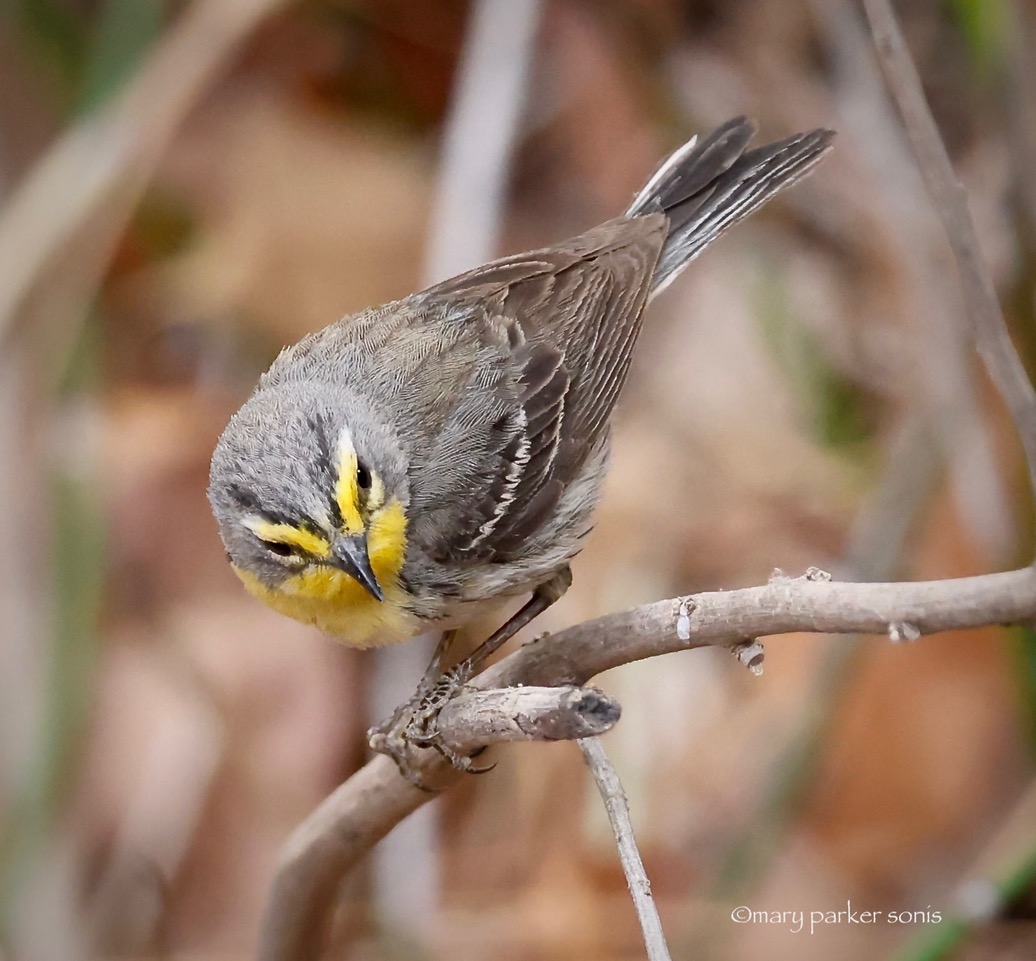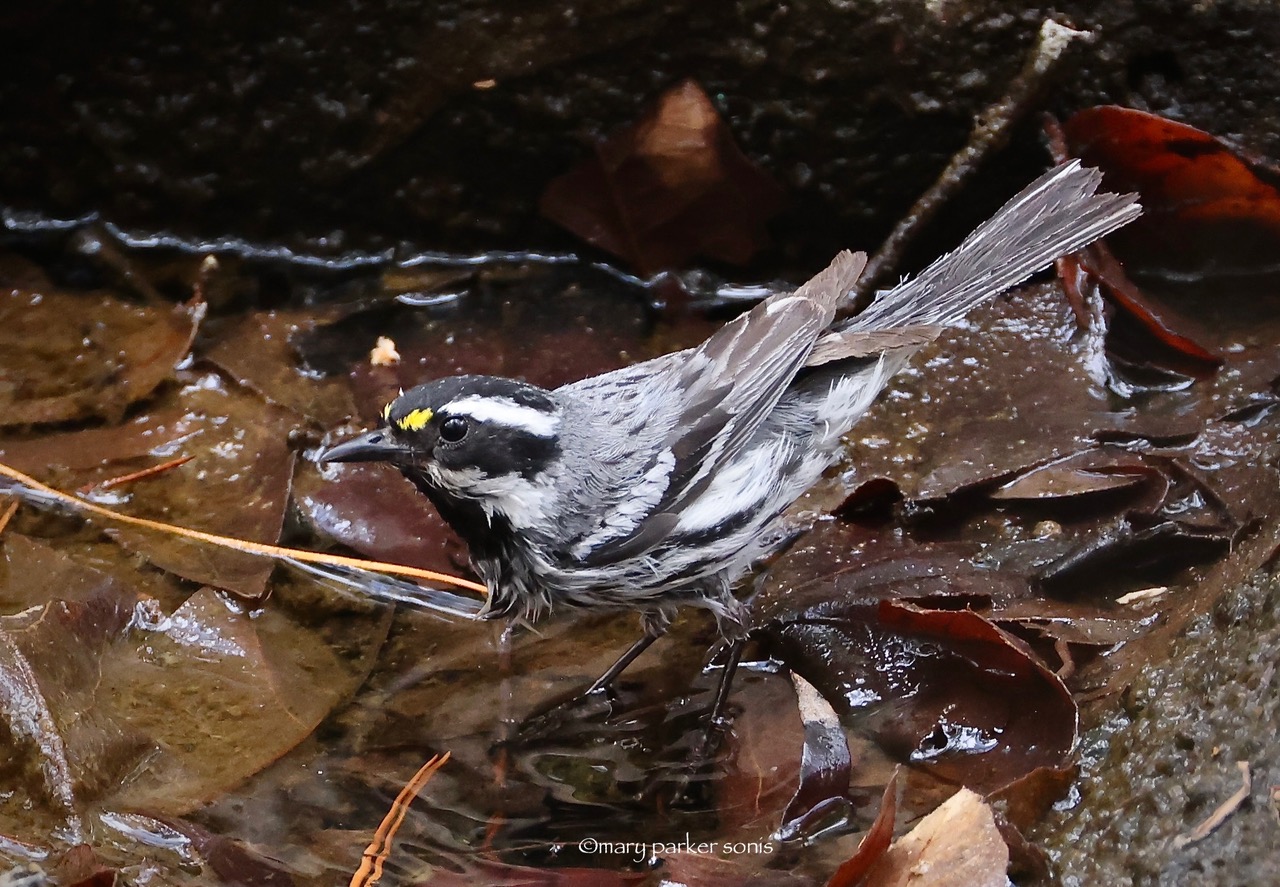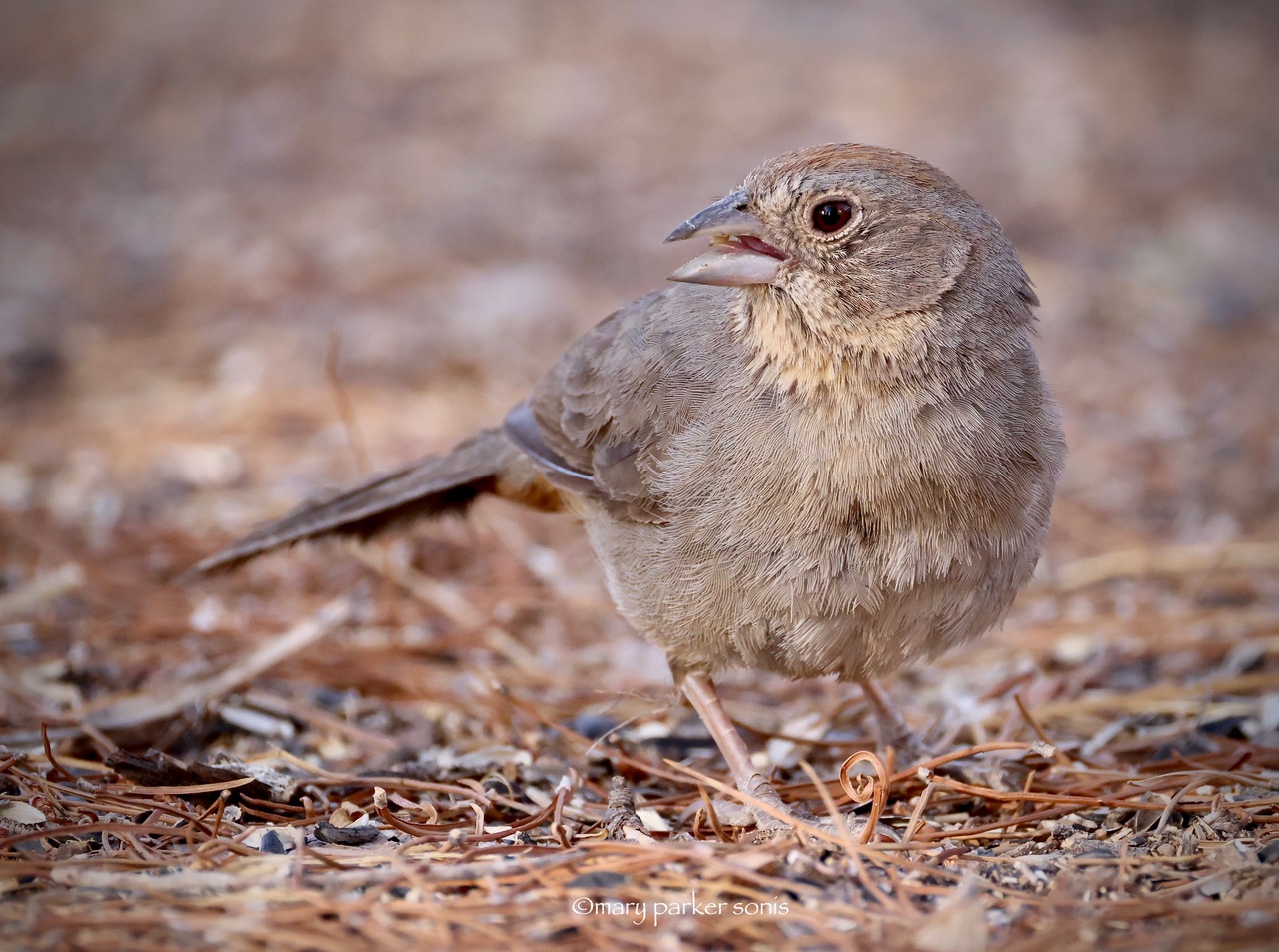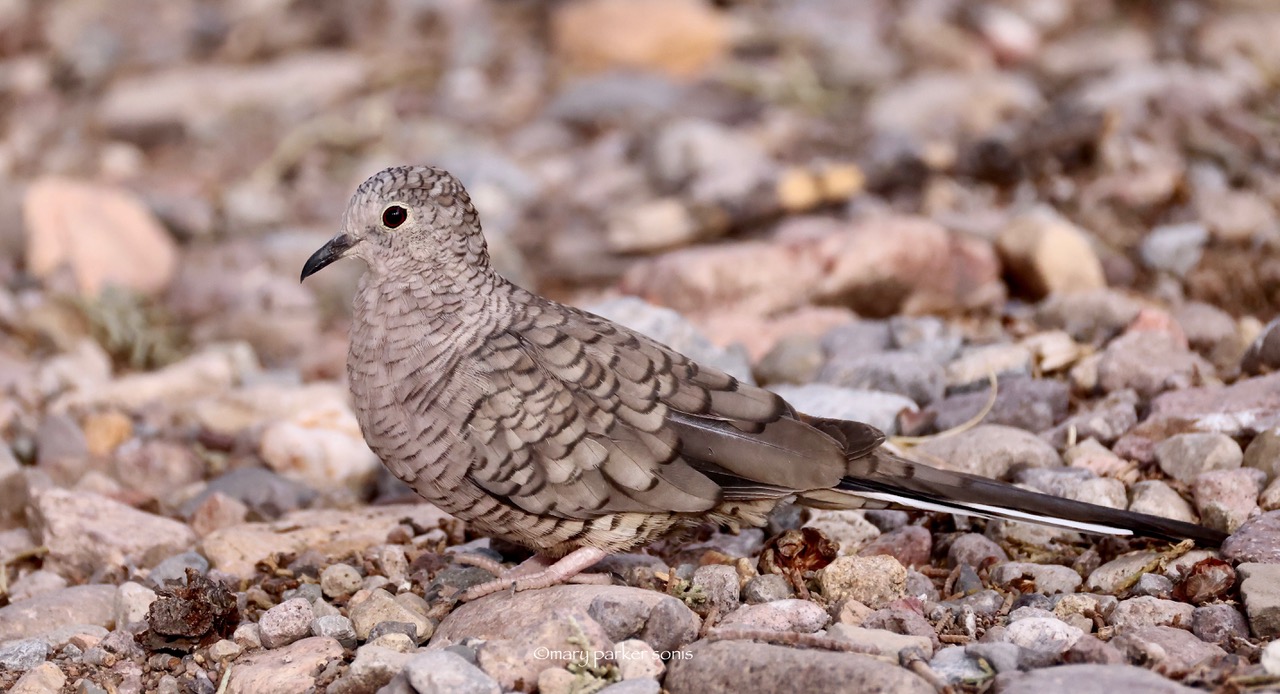There’s a small stage set up next to the Portal cafe where I imagine they hold music concerts, and I saw this statue on top of the stage roof. Collectively, this kind of artwork is known as Calavera. Portal is located about 60 kilometers from the Mexican border. The art represents the inevitability of death, but the celebration of life and memory. The terrain in the Chiricahua Mountains says Mexico, and the blend of Mexico and the American Southwest plays out in this tiny town.
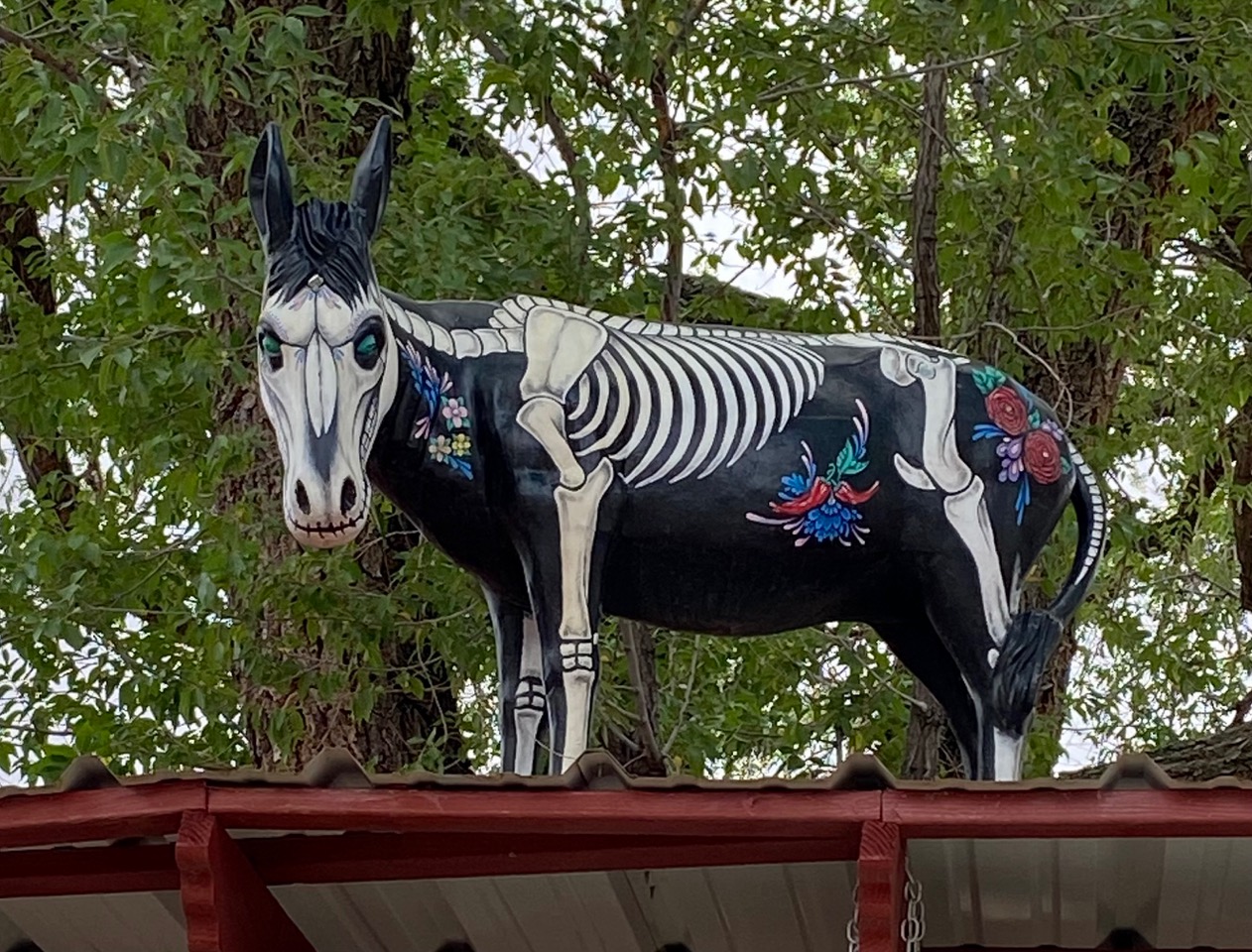
Ever on the lookout for warblers, I was delighted to see a few western species that I had never encountered before.
Townsend’s Warbler
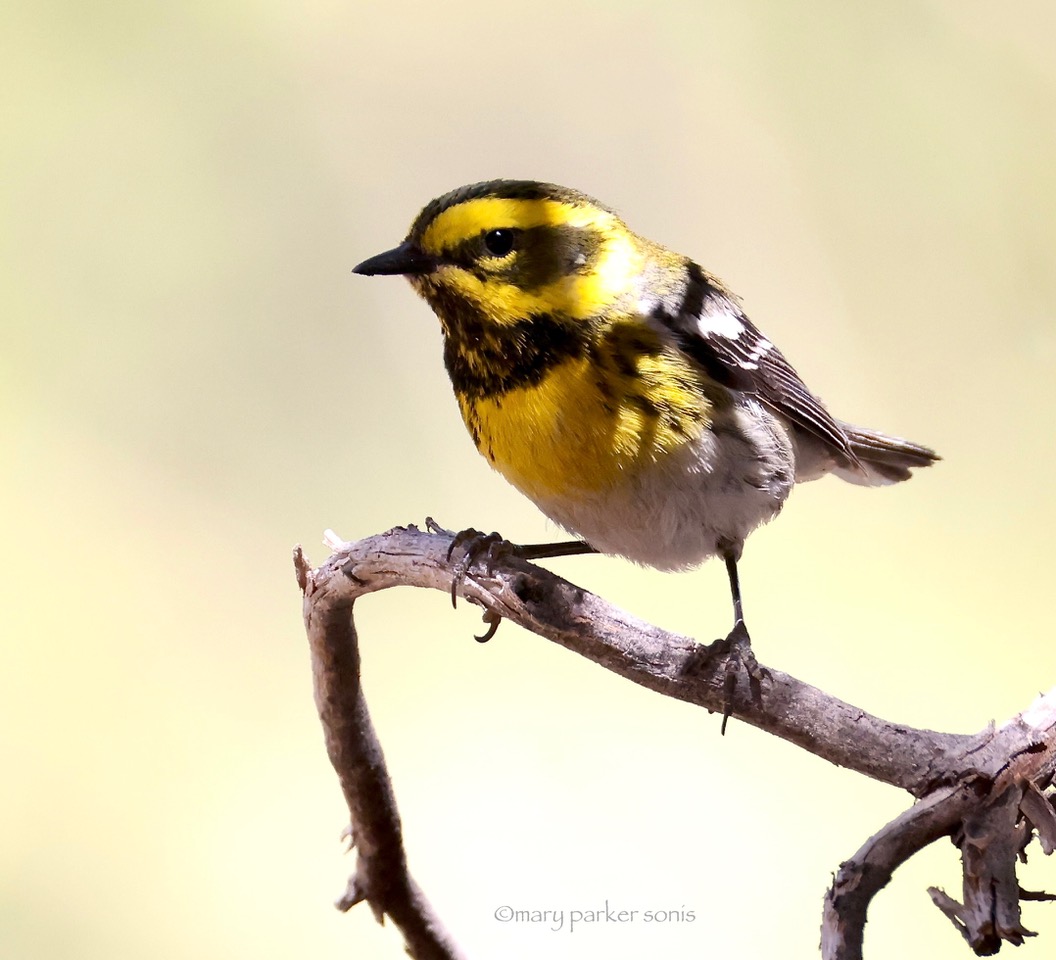
We saw Wilson’s Warblers in multiple locations. They were the default warblers of the trip, and it wasn’t unusual to see four or more on any given day. We do occasionally see a Wilson’s here in North Carolina, but it’s a rare and treasured find.
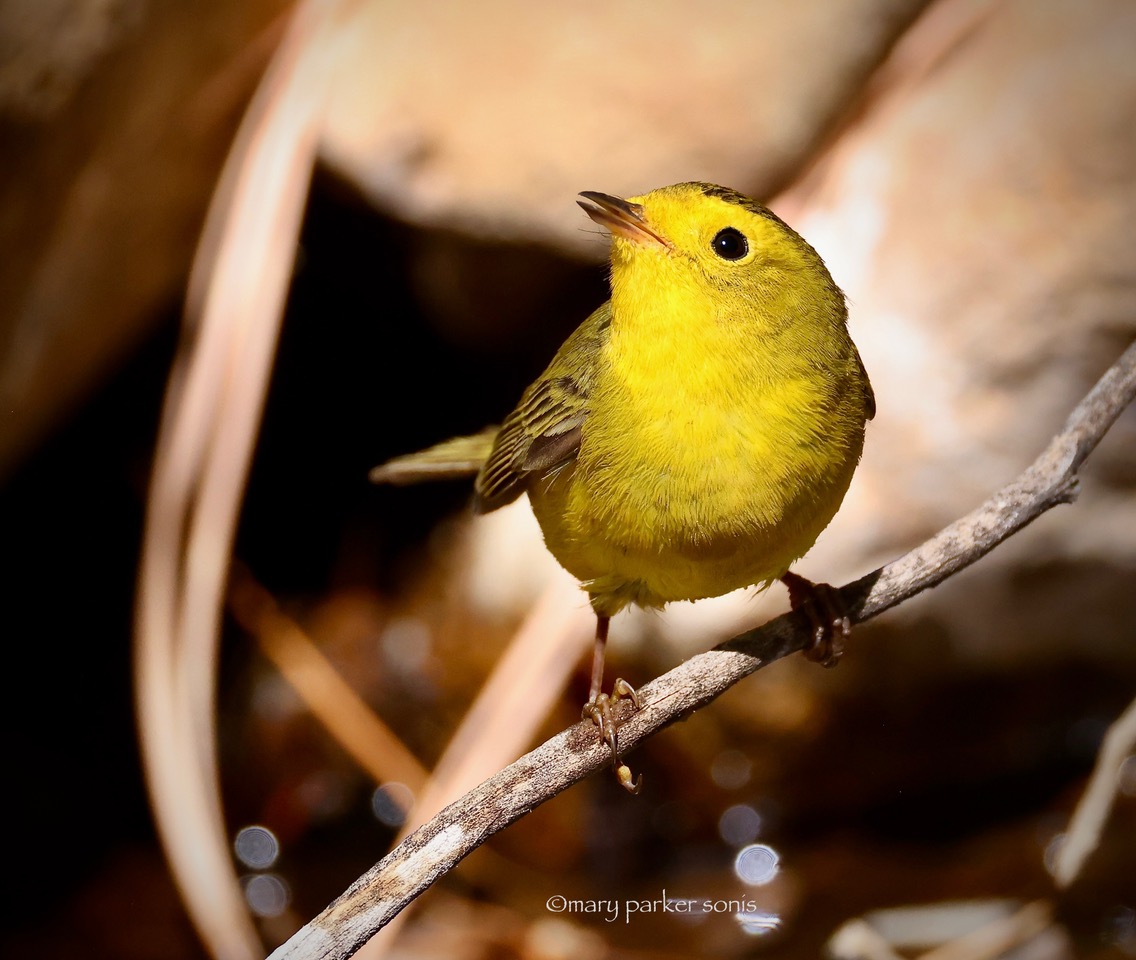
Another view of a female Wilson’s
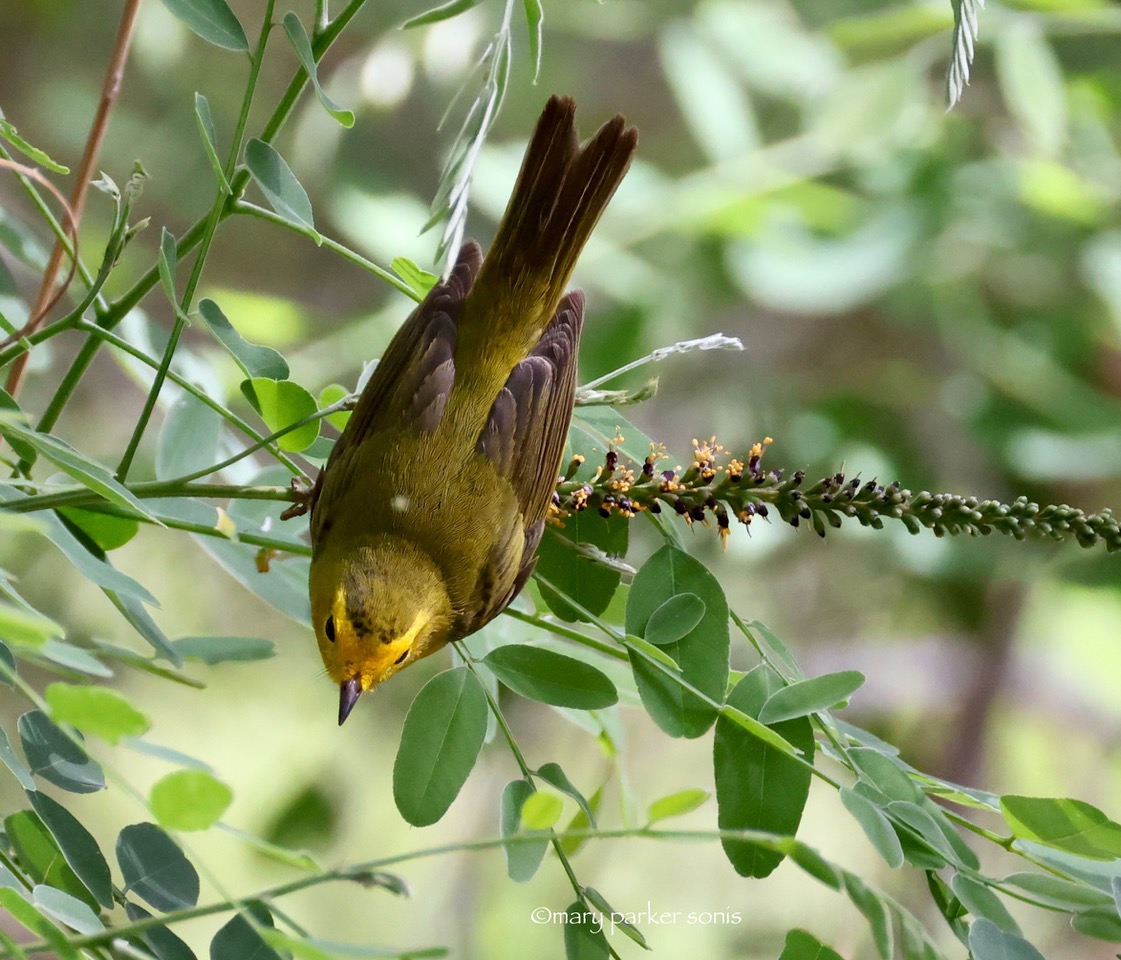
Hermit Warbler. This warbler doesn’t breed in Arizona, but is migrating through to its breeding grounds in the Cascade and Sierra Nevada mountain ranges further north and west.
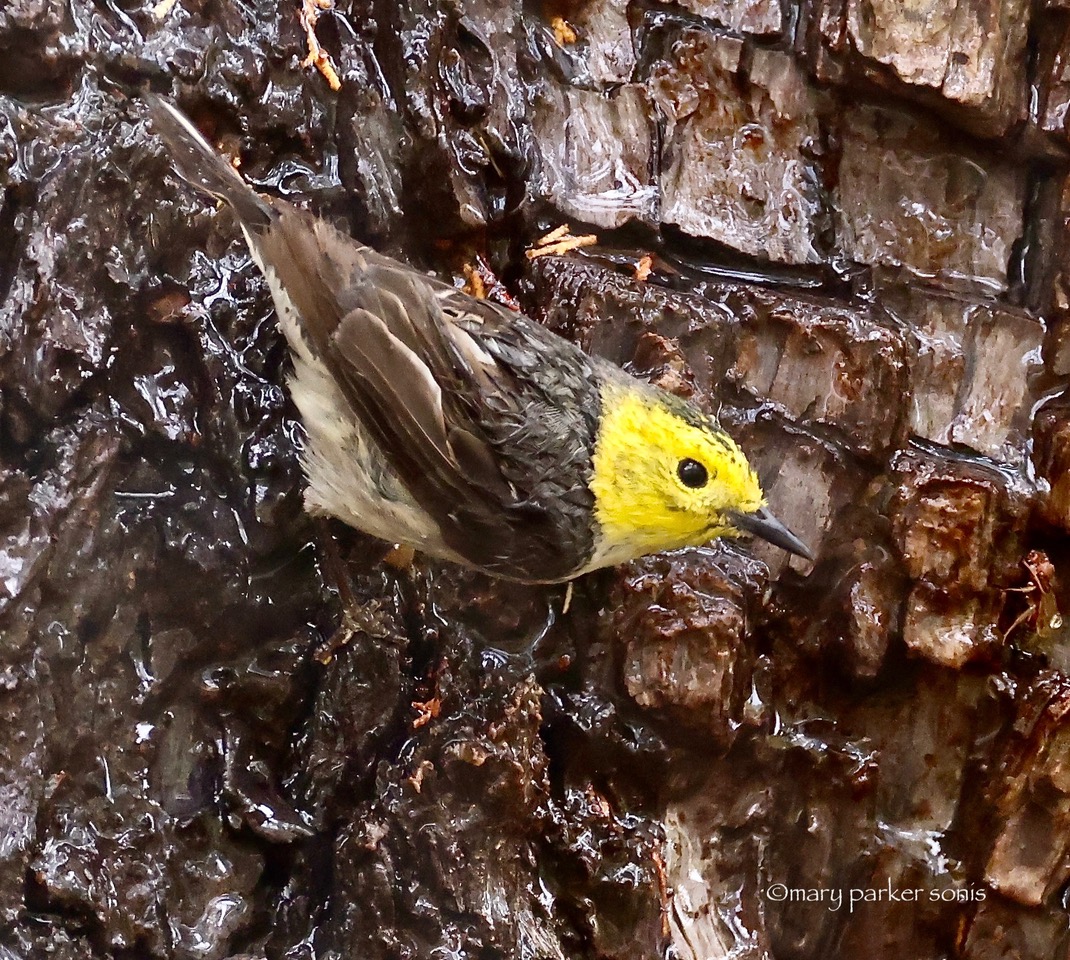
A Verdin is a tiny songbird (4.2 inches long) of the southwest. I’ve never encountered such a well protected nest. First off, the Verdin pair have built the nest in a Cholla Cactus. The male of the pair builds the exterior, and if you look carefully, you will see that the exterior structure is constructed exclusively using tiny double thorned twigs. The female works on the interior, and she lines the nest with feathers and softer vegetation. Entrance to the nest is low and to the side.
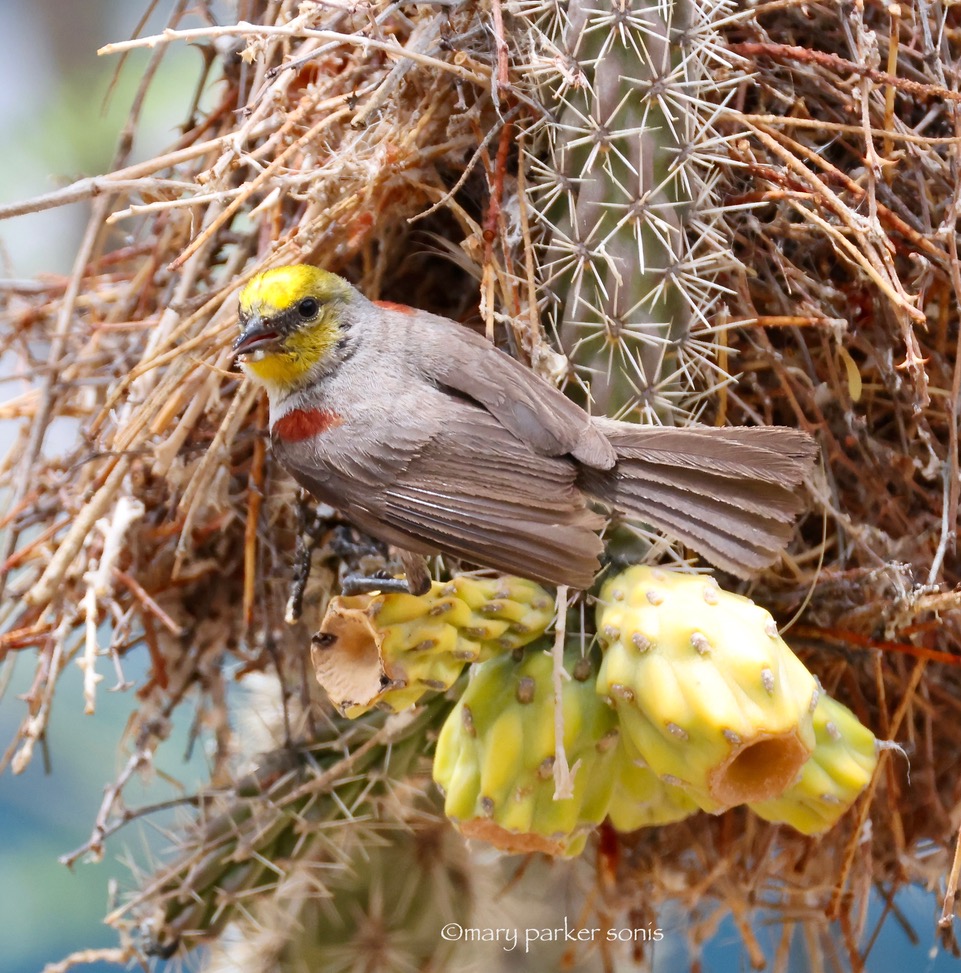
Here you can get a better view of the scale. The nest is a veritable fortress of thorns. Our guide told us that the barrier of thorns is so effective that occasionally a young fledgling moving around will get entangled in the thorns as it exits the nest, and then perish, leaving a shrunken desiccated form hanging by the nest like a raisin.
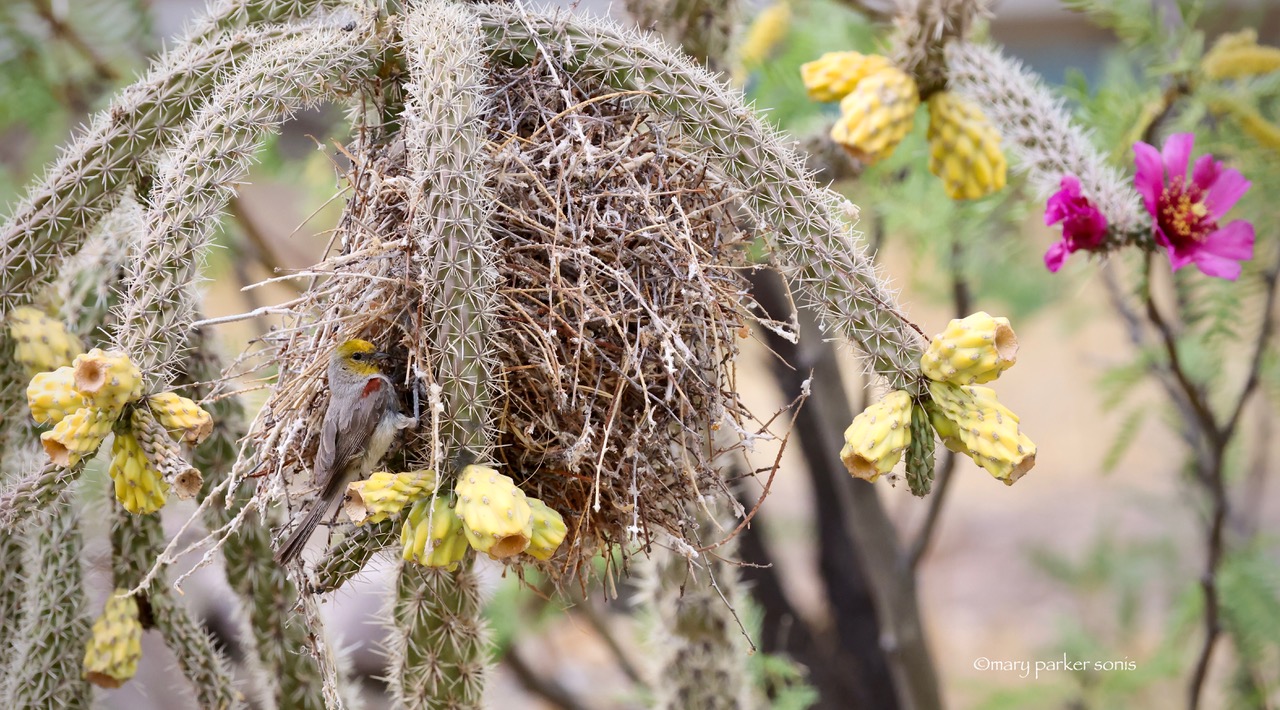
Arizona Woodpecker. This is the only brown woodpecker in North America. They are similar in size to a Hairy Woodpecker. Once again, the single water filled creek spot in the canyon drew the bird in for a quick drink. I was thrilled to see him from my perch on the bridge.
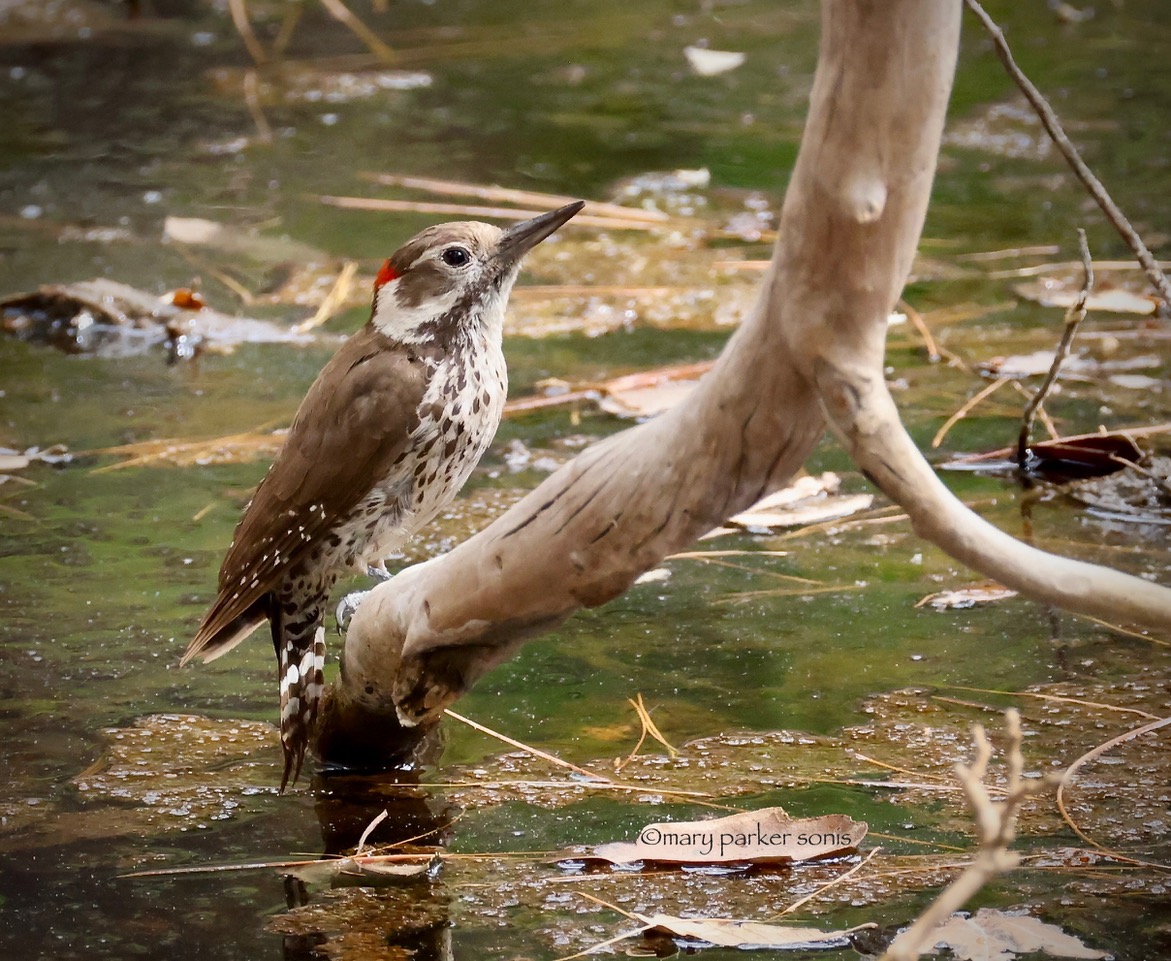
The range of the Arizona Woodpecker is quite small within the confines of the continental US.
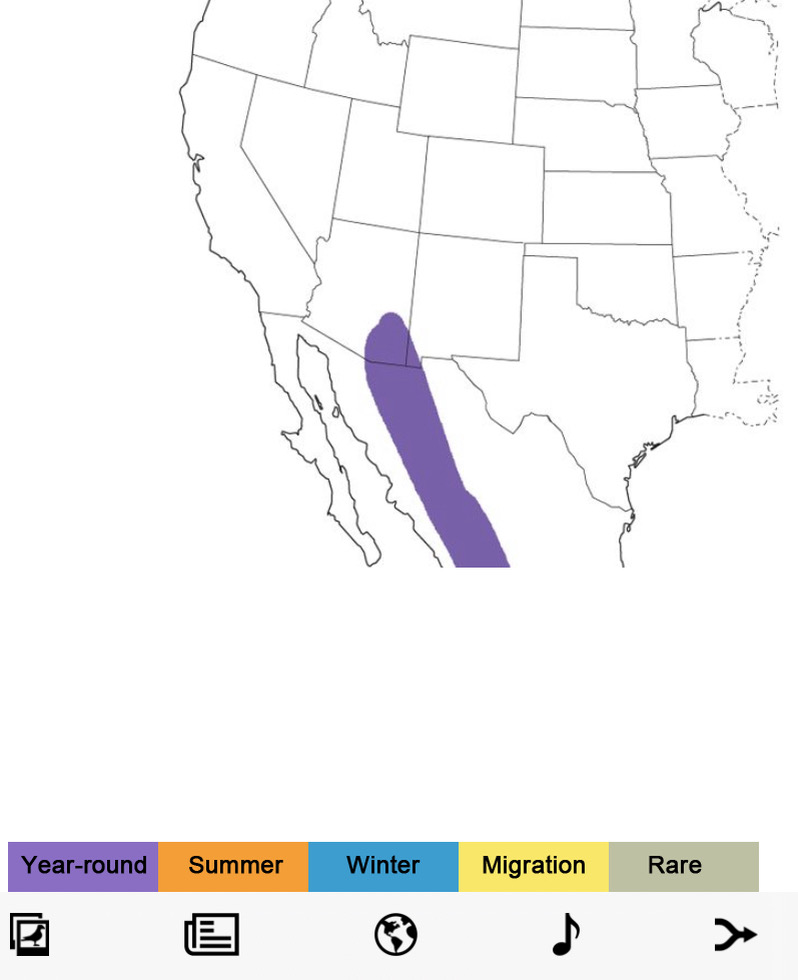
Bronzed Cowbird. Described by some as having a “vampire “ eye.
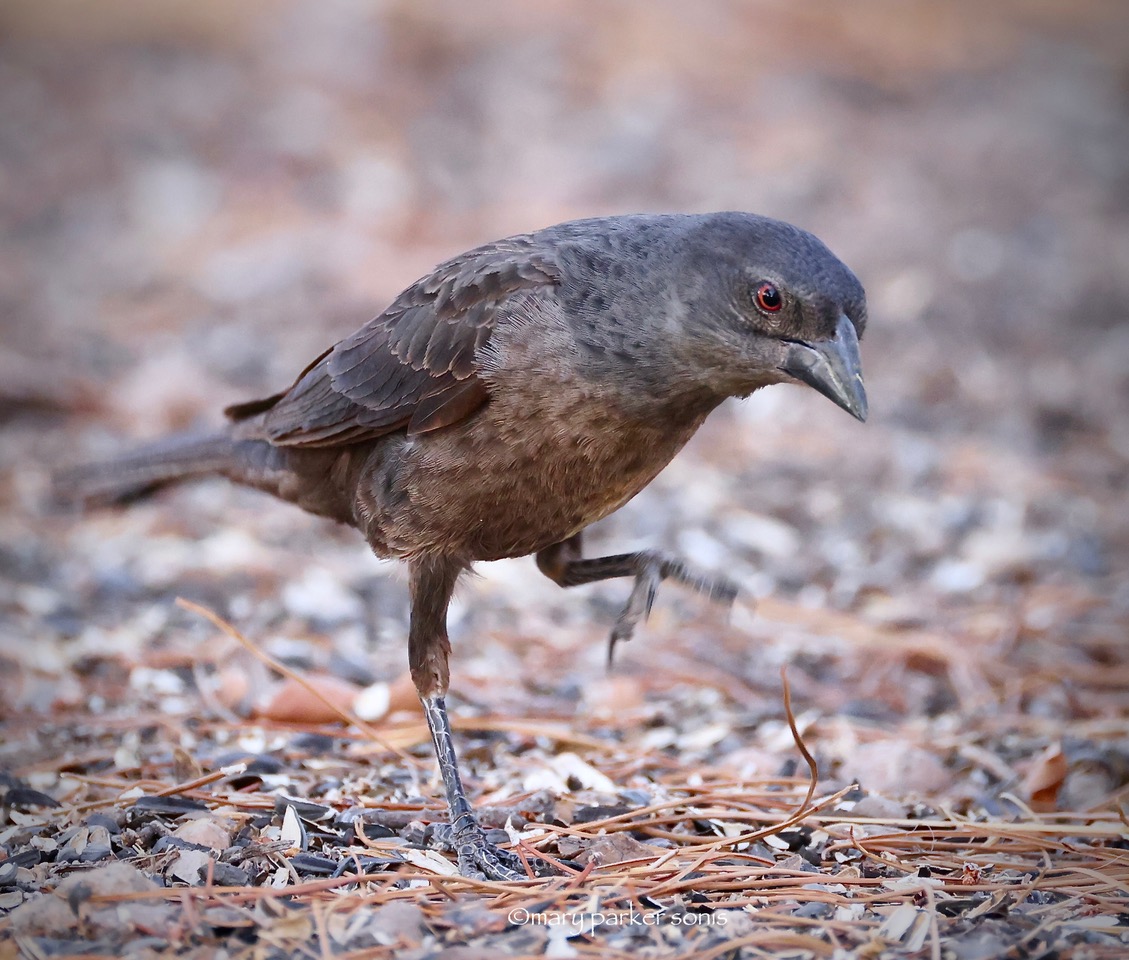
Black-throated Sparrow, common year round in the desert scrub habitat.
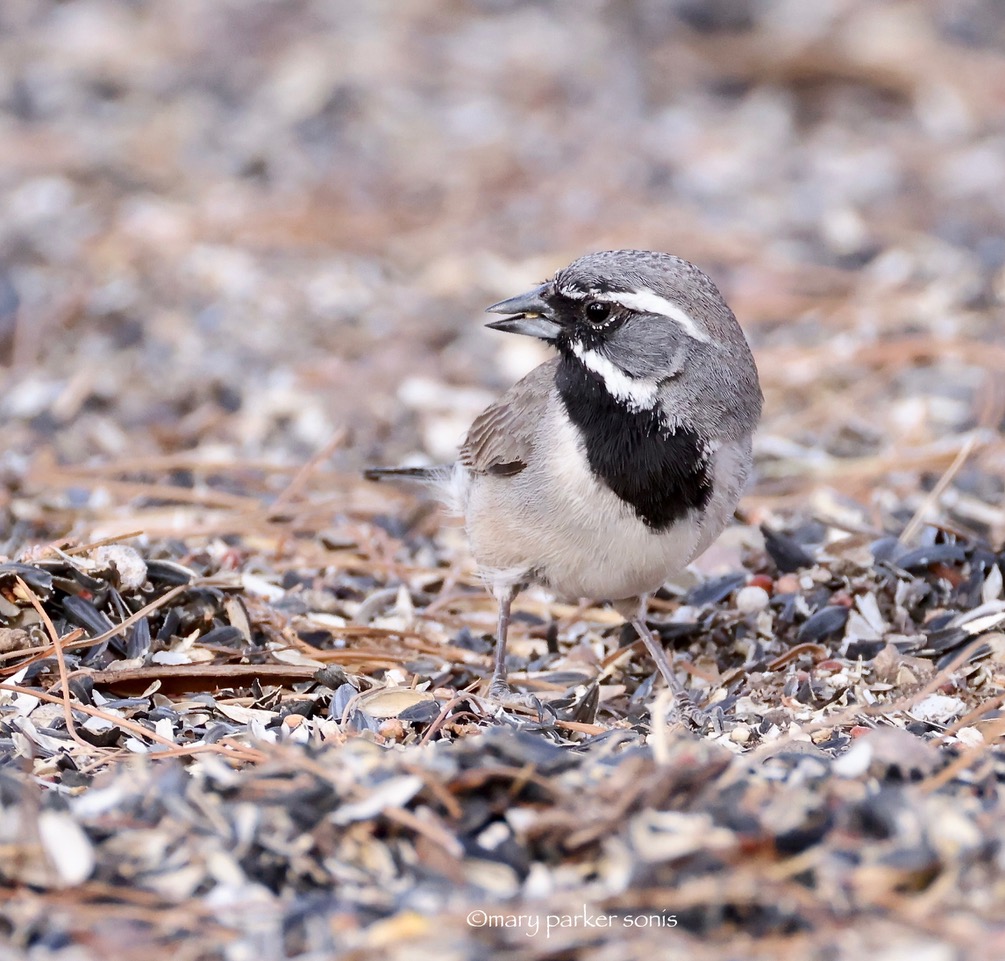
Sulphur-bellied Flycatcher. When I look at this bird, I need to include a little information about nest cavities. One of the most important canyon tree species is the Sycamore. Acorn Woodpeckers are abundant, and excavate cavities in Sycamore trees. Other birds require nest cavities as well, including Bridled Titmice, Sulphur-bellied Flycatchers, Flickers, Elf Owls, Screech owls and Trogons. Why is the Sycamore such a popular cavity tree? Often you will see round break- off points where a limb has broken off the tree. This breakage exposes the softer heart wood of the tree, and enables birds to excavate with greater ease. A Sycamore tree is vital to this ecosystem.
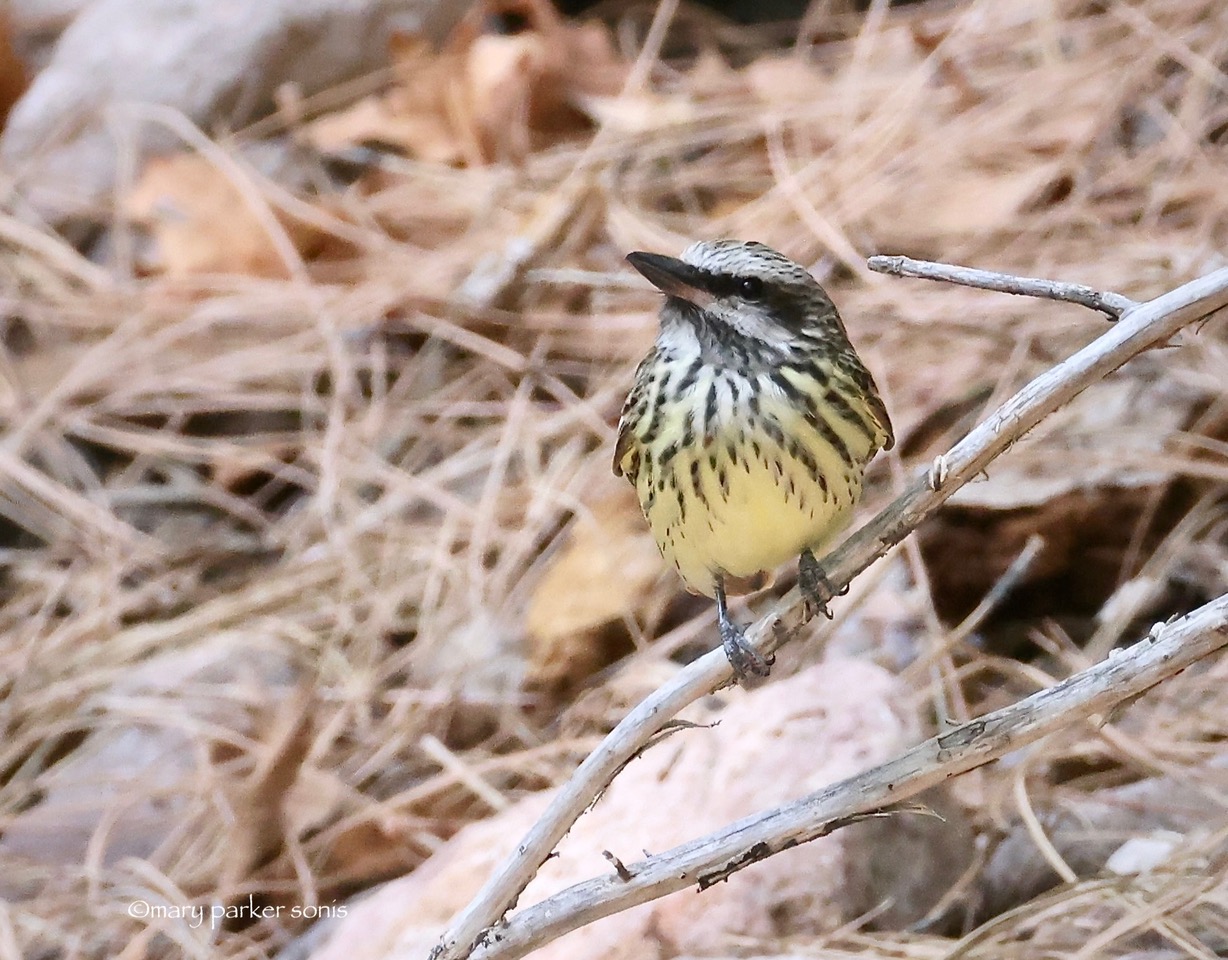
Oh we were so fortunate! One afternoon, Karla and I were down by the creek at South fork, just waiting to see who would come down for a bath. We sat on the ground, and tried to get comfortable by leaning against a rounded boulder. From up on the bridge, a woman called out to us. Stay where you are, the Montezuma pair are coming down the slope to have a drink. This lovely woman and her husband were retired biologists monitoring the movement of this particular pair of Montezuma Quail. Carol and Dave were so generous to share their sighting. We waited quietly, and then softly picking their way along the opposite bank of the creek, the Montezuma pair slowly made their way one behind the other in a sedate little march. Gambel Quail race around, Montezuma Quail take their time. They are rarely seen because they nest and reside upslope in the taller grasses.
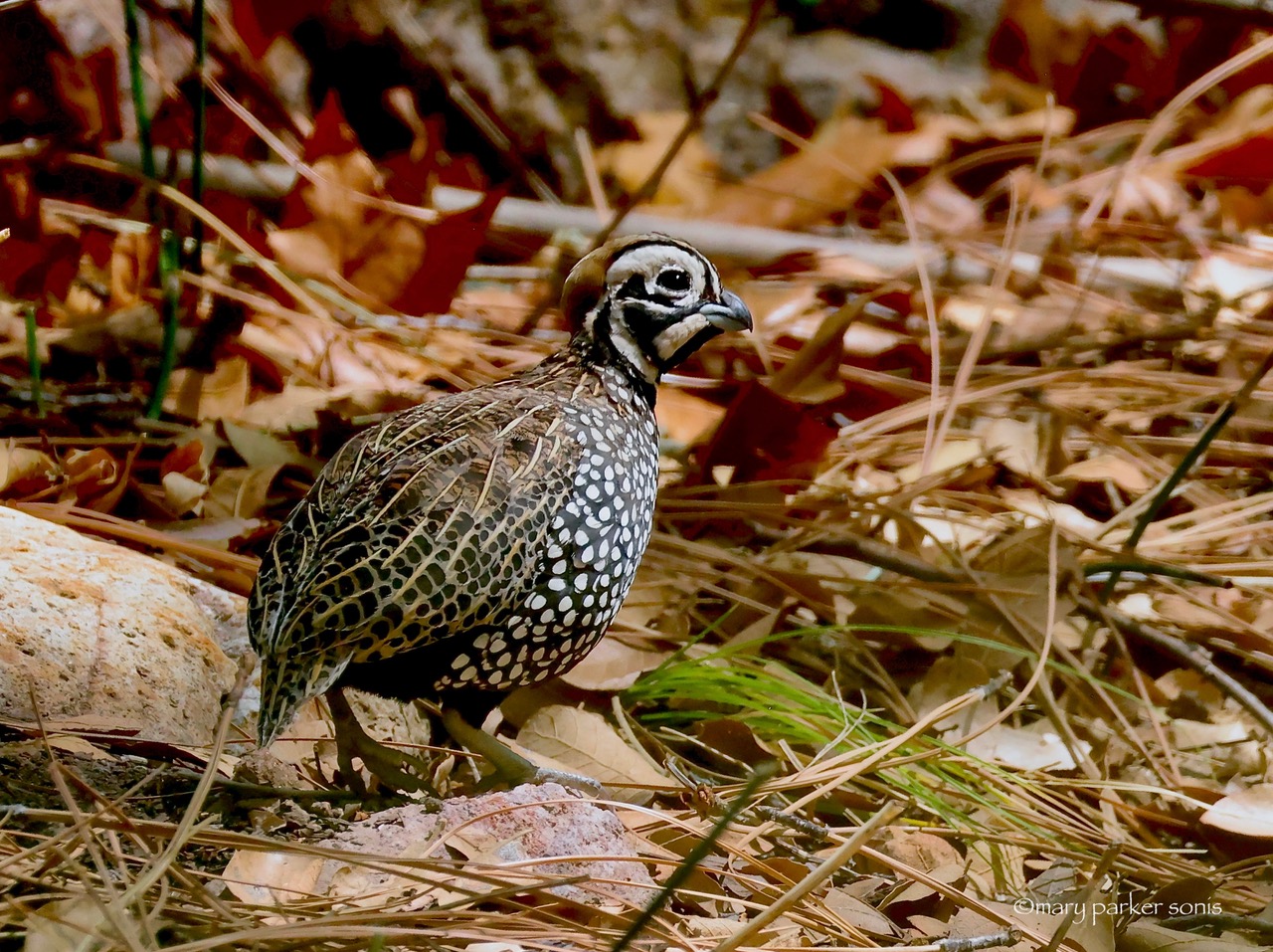
This is the spot where they settled in to take a drink

Mom and Pop.
Special thanks go out to Carol Simmons and Dave Steingraeber for their generosity and friendship.
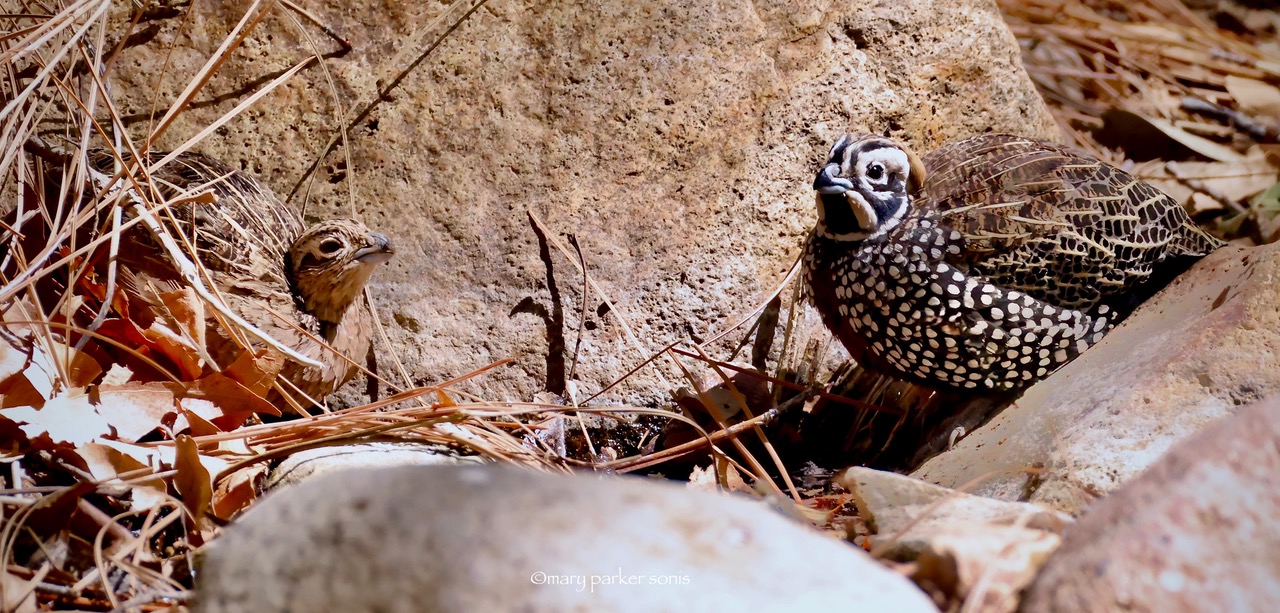
Early evening, and we liked to wander the canyon roads for other wildlife. By now the birds are settling in for the evening, but as the sun sets, you never know who might be out and about. A coyote can’t resist lingering to see what you might be doing. In this case the coyote trotted off up the trail, but went under the shade of a huge boulder to observe us. We see you my friend.
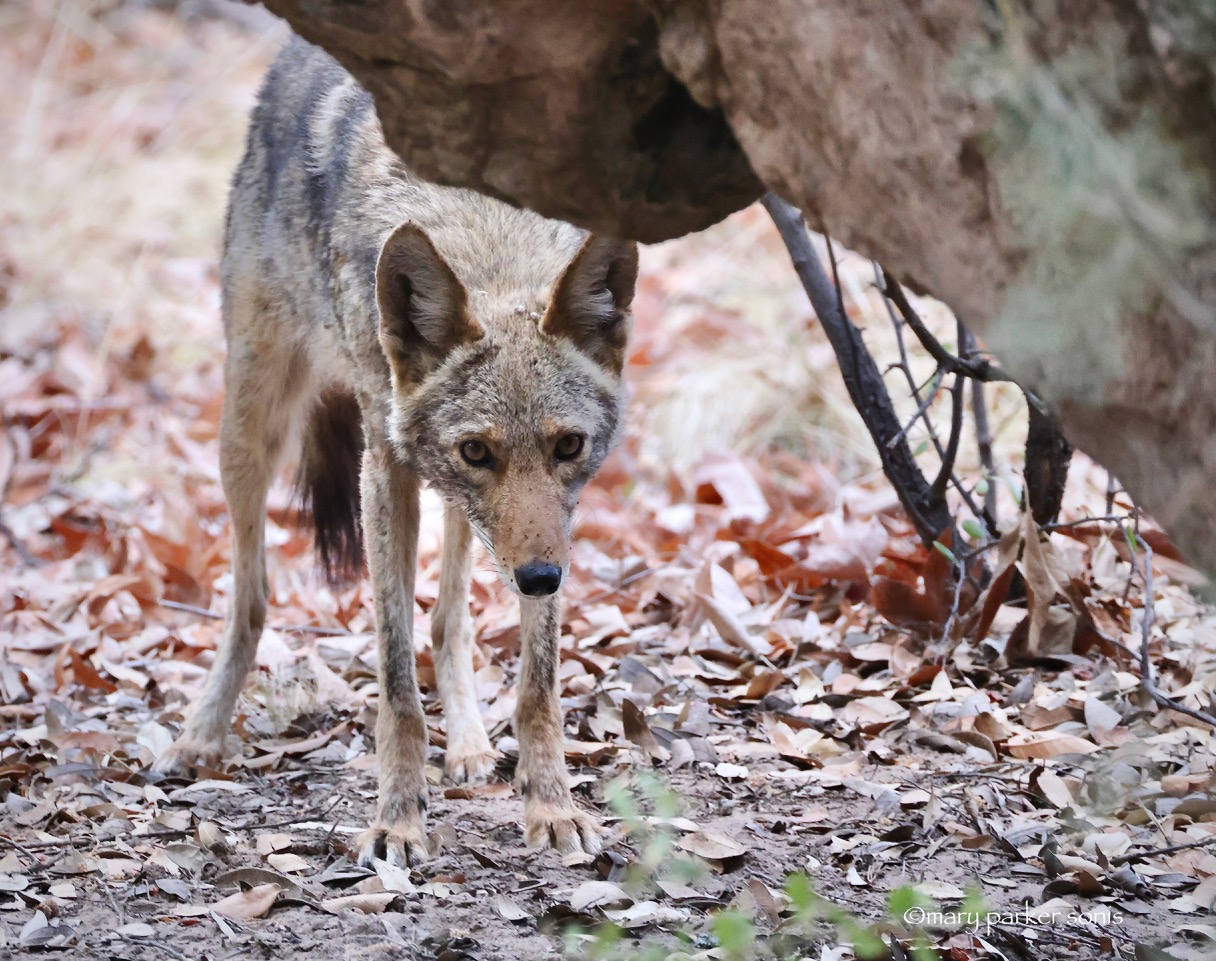
Stay tuned for the final installment from Cave Creek Ranch, and the Chiricahua Mountains. Lots more color in the upcoming post.
Love,
Mary K
